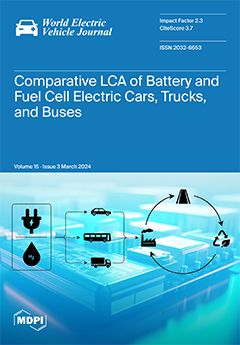The evolution of electric propulsion systems in the maritime sector has been influenced significantly by technological advancements in power electronics and machine design. Traditionally, these systems have employed surface-mounted permanent magnet synchronous motors (PMSMs) in podded configurations. However, the advent of permanent magnet
[...] Read more.
The evolution of electric propulsion systems in the maritime sector has been influenced significantly by technological advancements in power electronics and machine design. Traditionally, these systems have employed surface-mounted permanent magnet synchronous motors (PMSMs) in podded configurations. However, the advent of permanent magnet Vernier motors (PMVMs), which leverage magnetic gearing effects, presents a novel approach with promising potential. This study conducts a comparative analysis between PMVMs and conventional PMSMs at a power level of 5 MW for podded ship propulsion, with a particular focus on the impact of gear ratios (
). An objective function was developed that integrates motor dimension constraints and the power factor (PF), a critical yet frequently neglected parameter in existing research. The findings indicate that PMVMs with lower
have lower mass and cost compared to those with higher
and traditional PMSMs, at a PF level of 0.7, which is high for Vernier machines. Moreover, PMVMs with lower
achieve efficiencies exceeding 99%, outperforming both their higher
counterparts and conventional PMSMs. The superior performance of PMVMs is attributed to lower current density and reduced copper loss, which contribute to their enhanced thermal performance. These details are elaborated on further in the paper. Consequently, these findings suggest that PMVMs with lower
are particularly well suited for high-power maritime propulsion applications, offering advantages in terms of compactness, efficiency (EF), cost-effectiveness, and thermal performance.
Full article





